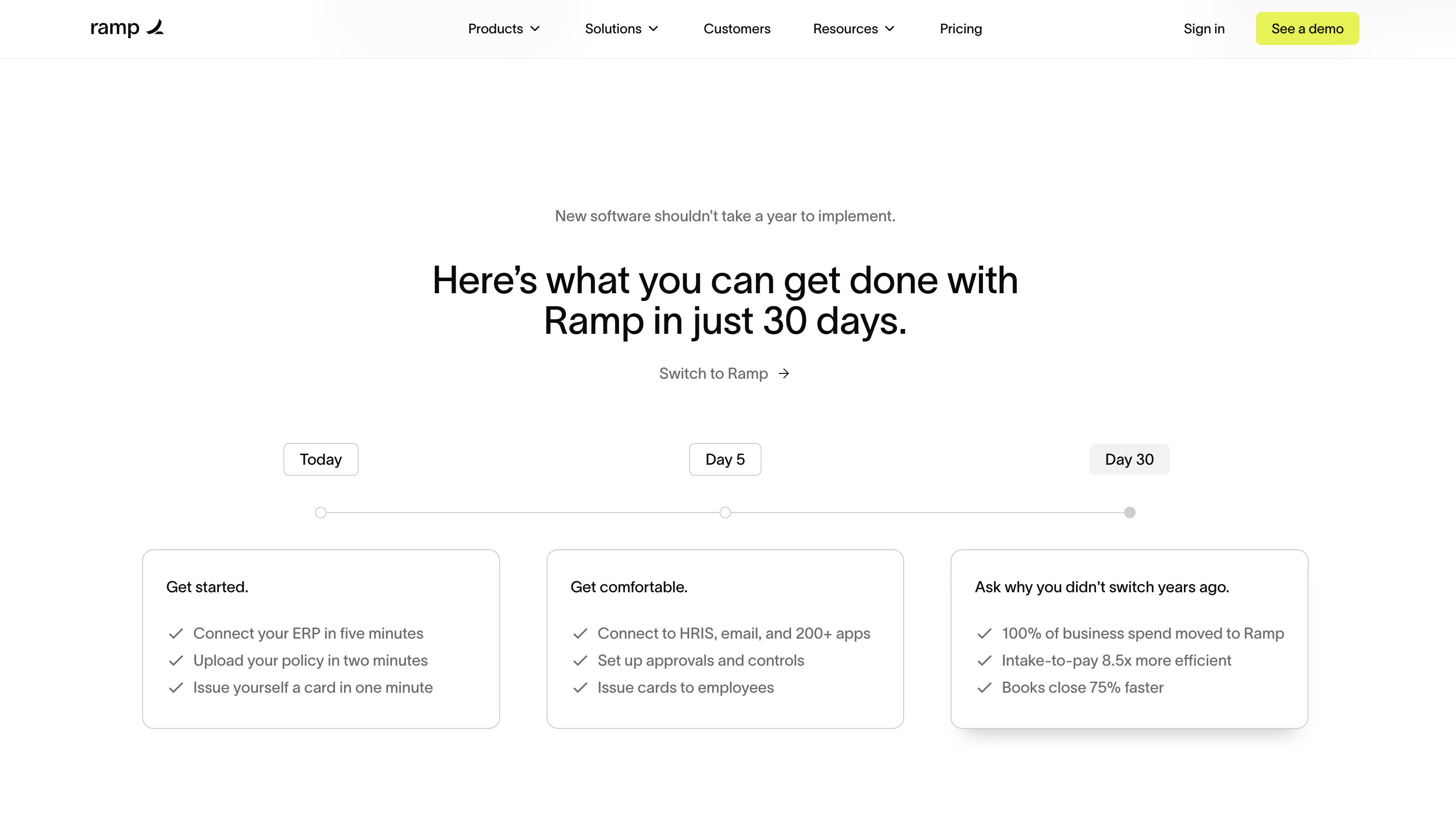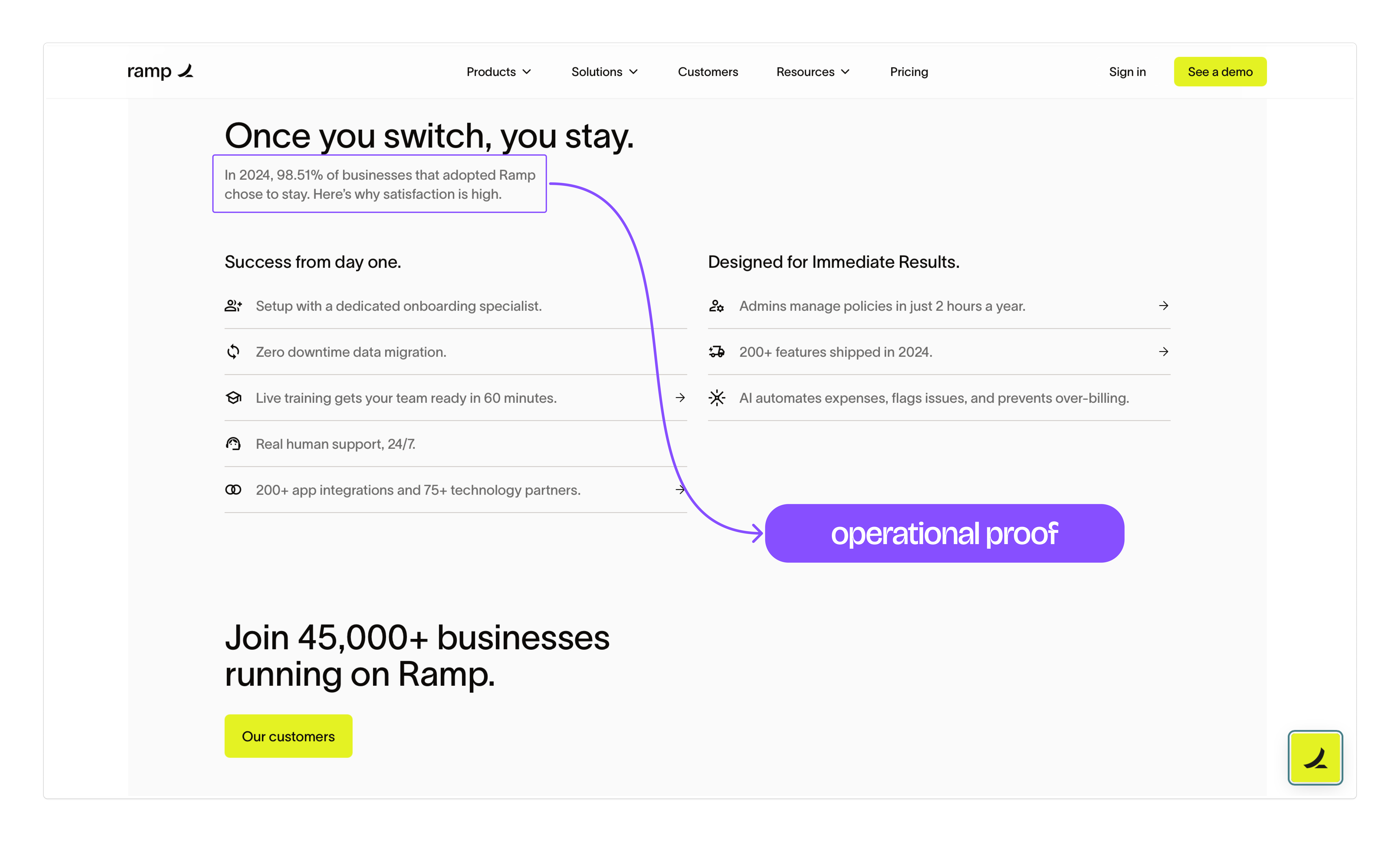
Most SaaS companies position on product capabilities: “We have better features.” Ramp positions on deployment reality: “We get you to value faster.”
This matters because for many enterprise buyers, the best solution isn’t the one with the most features but the one they can get running this quarter instead of next year.
By making implementation transparency the homepage narrative, Ramp transforms a traditional sales objection (implementation or switch costs) into its primary competitive advantage.
Ramp was co-founded in 2019 by Eric Glyman, Karim Atiyeh, and Gene Lee. Headquartered in New York, the company offers corporate credit cards and a financial automation platform.
What I’m about to share is something I’ve almost never seen SaaS companies do. And that’s frontloading implementation transparency right on the homepage.
Most enterprise software websites bury implementation details in sales conversations or documentation. Ramp makes it clear on its homepage:
“New software shouldn’t take a year to implement. Here’s what you can get done with Ramp in just 30 days.”
Beyond product capabilities, Ramp’s homepage also makes a promise about the buying experience itself. The interactive timeline shows exactly what happens on day 1, day 5, and day 30 after purchasing the software.

Notice what they’re competing against: not other expense management platforms, but the status quo of staying with current solutions because switching costs feel too high.
That’s brilliant messaging, especially when selling to enterprise buyers who are wary about implementation costs, timelines, and possible implications.
This implementation timeline supports the hero section, which says:
“Time is money. Save both”
What I like about this section is how it expands through a CTA that leads to a dedicated page about switching from existing solutions.

While the homepage implementation timeline works for any buyer, this separate page specifically addresses teams leaving incumbent finance software. It answers the migration questions that stop finance leaders from making the switch:
The page headline states:
“Switch to Ramp today. Accelerate tomorrow.”
The framing is direct:
“Most finance software takes months to implement. Ramp only takes days.”
Then, Ramp breaks down four implementation steps with specific effort and time indicators:

One more thing worth noting is the operational proof Ramp is using on this page:
“In 2024, 98.51% of businesses that adopted Ramp chose to stay.”
This validates that rapid implementation doesn’t mean cutting corners. Buyers who switch based on speed promises actually stay because the product delivers ongoing value.

This isn’t vague “fast implementation” marketing. It’s specific enough to be held accountable. This is the type of messaging that builds trust with enterprise buyers.
Enterprise software purchases involve extended evaluation cycles with multiple stakeholders. A CFO needs to understand deployment timelines and migration risks. The level of transparency Ramp provides on its homepage respects how enterprise buyers actually research software.
They’re not clicking CTAs to immediately book demos. They’re conducting thorough research, building internal cases, and evaluating implementation risks across multiple competing solutions.
By making implementation details accessible on the homepage and through dedicated pages, Ramp lets each stakeholder independently research their domain-specific concerns without requiring sales engagement.
This reduces friction in two ways:
This is appealing for both new buyers and companies considering a switch from incumbent solutions.
Use implementation transparency as primary homepage messaging when:
